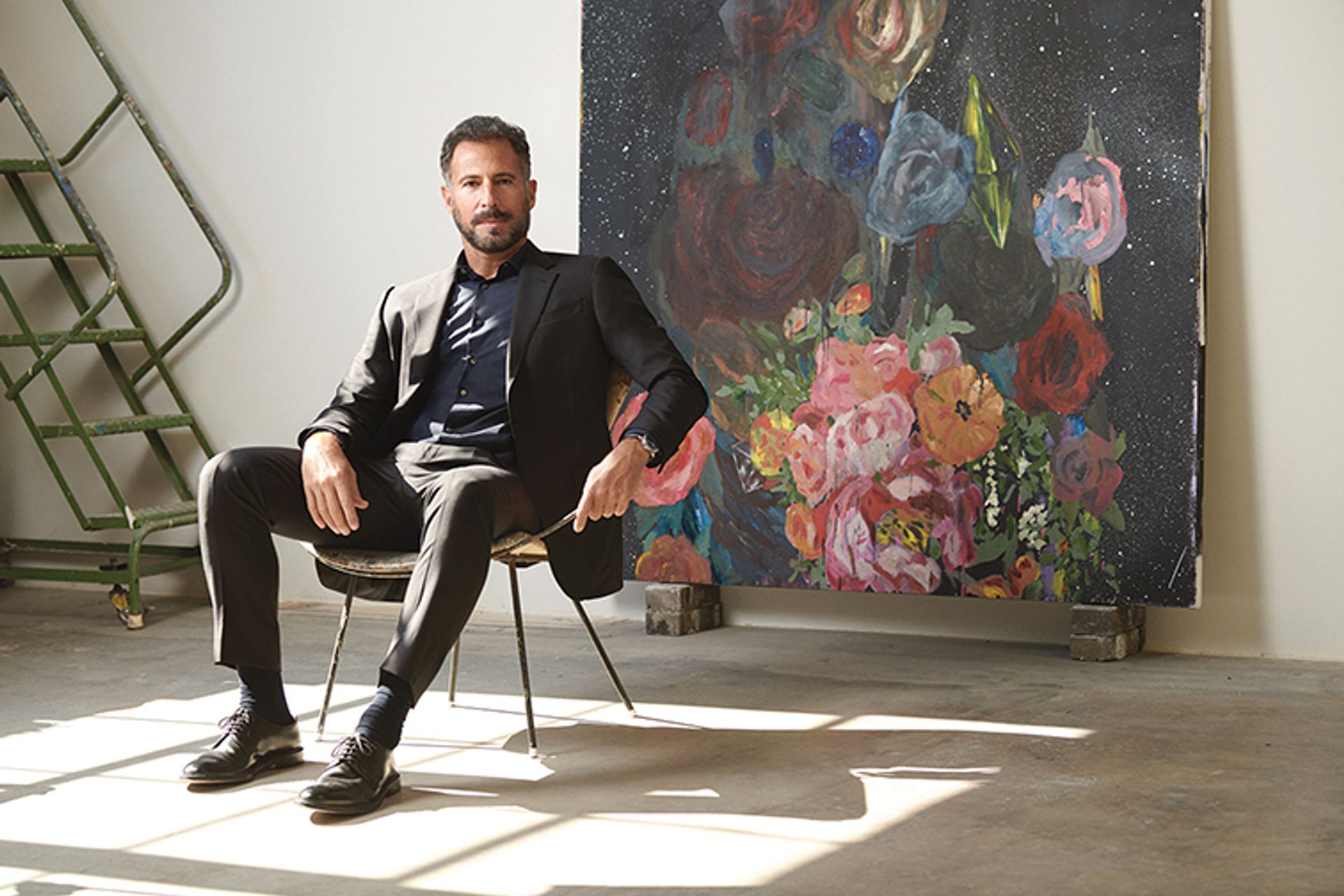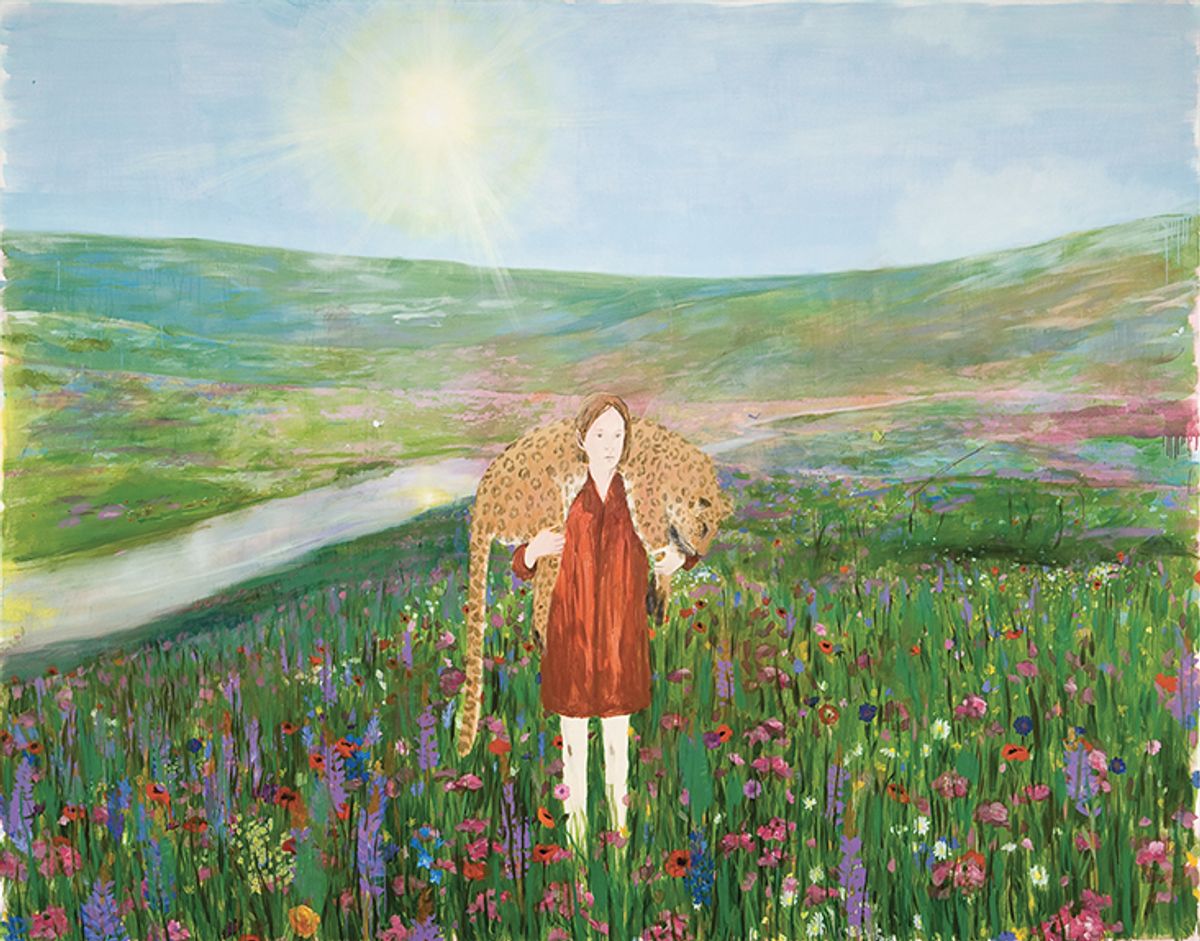Enrique Martínez Celaya never planned to have four exhibitions open in the same city at the same time. As with many artists, he found his schedule bulldozed by the pandemic. However, in a characteristically epic orchestration of exhibitions, he says he is putting his “cards on the table”.
The 57-year-old artist has lived and worked in Los Angeles on and off since the 1990s. But SEA SKY LAND: towards a map of everything at the Fisher Museum of Art at the University of Southern California (USC) will be his first museum survey in California since 2001, when the Orange County Museum of Art mounted an exhibition of work made between 1992 and 2000.
In tandem with this survey, an exhibition of artwork and writings made during a recent fellowship at the former Carmel home of poet Robinson Jeffers will take place at USC’s Edward L. Doheny Jr. Memorial Library.
To the east, in San Marino, Martínez Celaya worked with the Huntington Library, Art Museum and Botanical Gardens on the exhibition Borderlands, drawn in part from its historical collection. For his large-scale installation There-Bound (2021), he painted translucent migratory birds on the floor-to-ceiling gallery windows.

Martínez Celaya, pictured in his studio, has works on view in multiple shows across the city Photo © Kwaku Alston, courtesy of UTA Artist Space
To the west, in Beverly Hills, UTA Artist Space presents The Rose Garden, a solo exhibition of new paintings and sculptures by Martínez Celaya that respond to T.S. Eliot’s Four Quartets (1943), a work of poetry that he calls “unbelievable, hard to get around”.
The facts of Martínez Celaya’s extraordinary life border on the mythological. Born in Cuba in 1964, he fled the island with his mother and brother when he was seven years old. The family lived in Spain, then Puerto Rico, where the adolescent Enrique emerged as a prodigy in physics and philosophy, also taking up an apprenticeship with a traditional painter. At 18, Martínez Celaya emigrated alone to the United States, where he enrolled at Cornell University to study physics. Later, he dropped out of a PhD programme at the University of California, Berkeley to be an artist, designing lasers by day and painting at night. Today, among other appointments, Martínez Celaya holds the interdisciplinary position of provost professor of humanities and arts at USC.
Walk into Martínez Celaya’s exhibition at the Fisher Museum of Art and none of that will be readily apparent. Although his work is based in what exhibition curator Susan M. Anderson calls “the exilic imaginary”, it rarely strays into autobiographical disclosure.
Martínez Celaya’s monumental The Faithful (2019) greets visitors. Over 12ft high, the painting of a giant full moon illuminating white roses and butterflies is a hair’s breadth from a Hallmark cliché. The painting is an impossible concoction of longing and reverie. But blown up to magisterial proportions, it begins to disintegrate: the thin oil paint seems unfinished in places, while the loosely brushed blooms dribble into the blackness.
“Even though people typically describe it as a heroic scale,” the artist says over Zoom from his studio in south Los Angeles, “to me, it’s the anti-heroic scale”. His infatuation with painting big began as a way of exposing a painting’s inauthenticity.
“Authenticity is a very problematic concern these days,” he says, “but I still think it is a viable attempt to make in painting. But painting sabotages authenticity constantly. So I think the only way to assess the possibility of authenticity in painting is to undermine it from the outset.”
The only way to assess the possibility of authenticity in painting is to undermine it from the outsetEnrique Martínez Celaya
Not all of his paintings are large. Nearby is The Planter’s Seed (2014), an installation of 34 framed watercolours of various skies: sunsets, rainclouds, stars, a tornado, a rainbow. Martínez Celaya considers them “34 failures to capture the sky”.
The artist says his approach is informed by his background in physics. “Quite often in the arts, people focus on the objects of the dynamic. But I’m particularly interested in the forces at play in the dynamic,” he says. “What are the things that are pushing against each other? And what are the consequences of that?” Those forces, he suggests, include memory, distance, time, redemption, confusion, crisis and longing.
Of the Fisher Museum exhibition’s grandiose title, he notes, “The idea of mapping is to suggest that what you’re looking at here is not the end in itself.” Anderson adds, “It’s really about the mapping of a human heart.” She likens the ambitious artist to Captain Ahab, the doomed protagonist of Herman Melville’s Moby Dick (1851). “He’s sort of cursed by his own unrelenting drive. He knows that he can’t really paint towards a map of everything.”
• The Rose Garden, UTA Artist Space, until 12 March; SEA SKY LAND: towards a map of everything, USC Fischer Museum of Art, until 9 April


